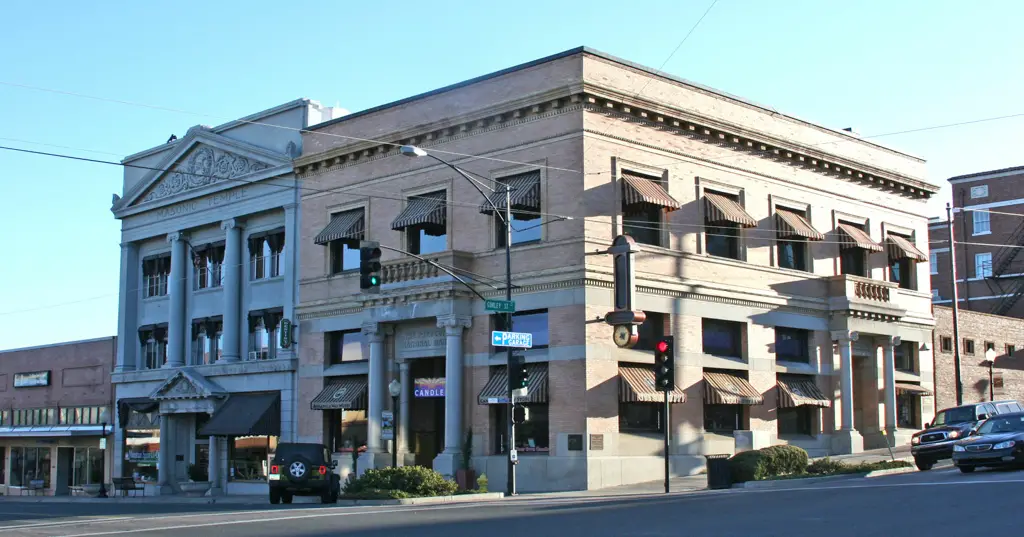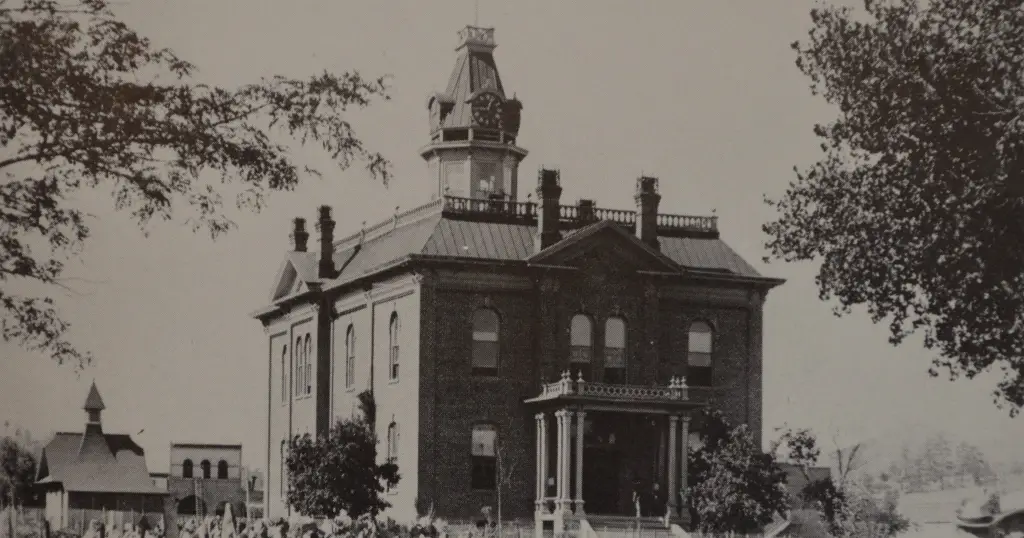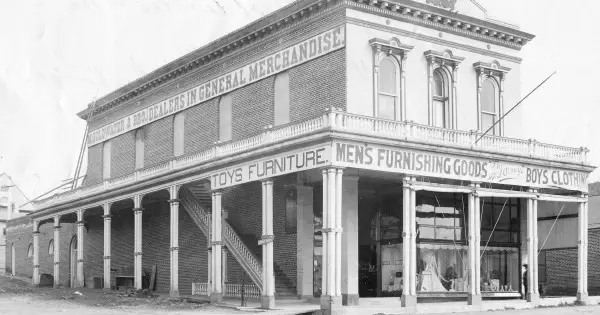In the heart of Arizona, Prescott stands as a testament to architectural beauty and the enduring significance of craftsmanship and detailing in historic buildings.
This quaint town, steeped in history, offers a unique window into the past through its well-preserved structures. Each building in Prescott narrates a story of artistry and skill, showcasing a range of styles from Victorian grandeur to the simplicity of American Craftsman.

This article delves into the intricate world of Prescott’s architectural heritage, exploring the various elements that contribute to its distinctive charm.
Historical Context
The historical context of Prescott’s architecture is a vivid tapestry that reflects its rich past. Founded in the mid-19th century, Prescott evolved from a frontier settlement into a bustling town, mirroring broader architectural trends and influences.
The town’s buildings bear witness to this evolution, from rudimentary log structures of early settlers to the ornate Victorian homes symbolizing prosperity during the mining boom. Later, the introduction of the American Craftsman style marked a shift towards simplicity and functionality.
This architectural journey, influenced by various cultural and economic factors, encapsulates the town’s transformation and provides a tangible link to its diverse heritage, making Prescott a living museum of American architectural history.
Foundations of Prescott’s Architectural Identity
Prescott’s architectural identity finds its roots in the late 19th century, a period that saw the town flourish with a boom in mining and commerce. Early settlers brought with them diverse architectural influences, blending local and international styles.
The town’s growth coincided with pivotal movements in architecture, leaving a rich tapestry of designs reflecting various periods and cultural influences.
The architectural journey of Prescott began with simple log structures and evolved to incorporate more elaborate styles as the town prospered. Notable among these were the Victorian and Craftsman styles, which left a lasting imprint on the town’s skyline.
Key Historical Periods and Styles
Prescott’s history is marked by distinct architectural periods, each reflecting the socio-economic conditions of the times. The Victorian era, characterized by elaborate and ornate designs, signified Prescott’s burgeoning wealth and growth.
This period was followed by the advent of the American Craftsman style, which emphasized simplicity, handiwork, and natural materials, resonating with the town’s growing appreciation for local craftsmanship.
Architectural Styles in Prescott
In Prescott, a mosaic of architectural styles narrates the town’s rich history and cultural evolution. Victorian buildings, with their elaborate facades and ornate detailing, speak of a time of opulence and grandeur.
In contrast, the American Craftsman style, with its emphasis on simplicity and natural materials, reflects a different, more understated aesthetic. These styles, along with others, create a diverse architectural landscape in Prescott.
Each building, whether a grand Victorian mansion or a modest Craftsman bungalow, is a chapter in the town’s story, showcasing the varied influences and historical periods that have shaped Prescott’s unique architectural character.
This blend of styles not only adds to the town’s visual appeal but also provides a rich tapestry of historical context and cultural significance.
Victorian Era Grandeur
The Victorian era in Prescott is exemplified by its grand buildings, characterized by their ornate facades, intricate woodwork, and imposing structures. A walk through the historic district reveals beautifully preserved Victorian buildings, such as the iconic Hassayampa Inn, a marvel of 1927 architecture.
These structures are not just remnants of the past but are active parts of Prescott’s community, housing businesses and cultural centers. Their elaborate designs, with gabled roofs and decorative trims, stand as symbols of Prescott’s affluent past.
The Influence of the American Craftsman Style
The American Craftsman style, emerging in the early 20th century, marked a departure from the ornate Victorian designs to a more simplistic and functional aesthetic. This style is evident in many of Prescott’s historic buildings, characterized by their low-pitched roofs, exposed beams, and use of local materials.
Buildings like the Smoki Museum exemplify this style, blending seamlessly with the natural landscape and reflecting a harmony between architecture and environment. This style’s emphasis on handcrafted details speaks volumes about the skilled artisans of Prescott’s past.
Craftsmanship and Detailing
The craftsmanship and detailing in historic buildings are tangible reflections of a bygone era’s artistry and skill. In places like Prescott, these elements – from intricate woodwork and stonemasonry to ornate ironwork – showcase a high level of detail and care that modern construction often lacks.
Each feature tells a story of the artisans and the techniques of their time, offering a window into the past. Preserving these details is crucial, as they contribute significantly to the architectural identity and charm of historic structures.
Recognizing and maintaining this craftsmanship is not just about preserving physical attributes; it’s about honoring the legacy of the craftsmen and keeping the spirit of their work alive for future generations to appreciate and learn from.
Masonry and Stonework
Prescott’s historic buildings showcase a mastery in masonry and stonework, with local materials like granite playing a prominent role. The Yavapai County Courthouse, a remarkable example of this craftsmanship, stands as a centerpiece in Prescott’s downtown area. Its robust and elegant stone structure highlights the skill and precision of the masons of that era.
These stone buildings, apart from their aesthetic appeal, also tell the story of the region’s geology and the artisans’ ability to harness local resources to create structures that have withstood the test of time.
Woodwork and Carpentry
Wooden structures in Prescott, from ornate Victorian homes to Craftsman bungalows, display an array of woodworking skills. The intricate balustrades and detailed cornices of Victorian homes are a testament to the carpenters’ expertise. Similarly, the clean lines and functional design of Craftsman homes reflect a different, yet equally skilled, approach to woodwork.
The Sharlot Hall Museum, with its rustic log cabin structure, offers a glimpse into the early carpentry techniques used by Prescott’s pioneers, highlighting the evolution of woodworking skills in the region.
Ironwork and Metal Details
Ironwork in Prescott’s historic buildings adds a dimension of both beauty and functionality. From the ornate railings of Victorian mansions to the simple, sturdy fixtures in Craftsman homes, these metal details reflect the town’s industrial past and the artisans’ dexterity.
The Hassayampa Inn’s ironwork, with its intricate patterns and robust construction, showcases the artistic side of metalwork, blending aesthetics with utility.
Restoration and Preservation
Restoration and preservation of historic buildings are critical undertakings that require a blend of reverence for the past and adaptation for the future. This process involves meticulous care to maintain the original architectural integrity, while also incorporating modern enhancements for safety and functionality.
The challenge lies in employing innovative techniques that respect the building’s historical context, using materials and methods sympathetic to the original construction. Preservation not only safeguards the physical structures but also honors the cultural and historical narratives they embody.

Successful restoration projects not only revive the buildings but also rejuvenate the community’s connection to its heritage, ensuring these architectural treasures continue to enrich our landscapes and stories.
Challenges in Preserving Historic Buildings
Preserving Prescott’s historic buildings comes with unique challenges. Balancing historical accuracy with modern-day needs and navigating the deterioration of materials over time are just some of the hurdles. Efforts to maintain the original craftsmanship are complicated by the need for modern amenities and safety standards. Additionally, finding skilled artisans who can replicate the traditional techniques is increasingly difficult.
Case studies of restoration projects in Prescott, like the refurbishment of the Elks Opera House, demonstrate these challenges. Maintaining the historical integrity while upgrading the building to meet current codes required a delicate balance of preservation and innovation.
Modern Techniques in Preservation
Modern preservation techniques have played a crucial role in safeguarding Prescott’s architectural heritage. Advances in technology and materials have enabled more effective restoration, ensuring that these historic structures can withstand the rigors of time.
Successful preservation stories, such as the restoration of the Whiskey Row district, highlight the use of modern methods to revive historic buildings without compromising their original charm. This approach has allowed Prescott to maintain its historical identity while adapting to contemporary needs.
Architectural Tours and Education
Architectural tours and educational programs play a pivotal role in deepening the appreciation and understanding of a community’s historical buildings. In towns like Prescott, these tours offer an immersive journey through time, showcasing the rich diversity of architectural styles and the stories behind them.
They serve not only as a means of appreciation but also as a tool for educating the public about the importance of preservation.
Through these experiences, residents and visitors alike are encouraged to engage with and contribute to the safeguarding of their architectural heritage. Such initiatives foster a sense of community stewardship and ensure that the legacy of these historic buildings is passed on to future generations.
Guided Tours and Their Impact
Architectural tours in Prescott provide an immersive experience, allowing visitors and residents alike to appreciate the town’s rich history. These tours not only showcase the beauty of Prescott’s buildings but also educate participants on the significance of preserving this heritage.
The impact of these tours is profound, fostering a sense of pride and responsibility toward the preservation of Prescott’s architectural gems. The Sharlot Hall Museum, for instance, offers tours that highlight the craftsmanship and history of Prescott’s buildings, contributing significantly to architectural awareness.
Promoting Architectural Awareness
Efforts to promote architectural awareness in Prescott involve various community initiatives. From educational programs in schools to community-led preservation groups, these initiatives aim to instill a sense of stewardship for the town’s historic buildings.
The role of the community in preservation is pivotal. By engaging local residents in the history and significance of these structures, a stronger foundation for ongoing preservation efforts is built. Events like the ‘Prescott Heritage Trail’, a self-guided tour, play a crucial role in this educational process.
Economic and Cultural Impact
The economic and cultural impact of historic buildings is profound, particularly in communities like Prescott. Economically, these structures draw tourists, host events, and often house businesses, playing a vital role in the local economy.
Culturally, they are more than just edifices; they are repositories of history, symbolizing the community’s journey and evolution. Their preservation and continued use not only maintain the physical landmarks but also keep alive the stories and traditions they embody.
By bridging past and present, these historic buildings contribute significantly to a town’s identity, offering residents and visitors alike a tangible connection to the heritage and spirit of the community.
Historic Buildings as Economic Drivers
Prescott’s historic buildings contribute significantly to the local economy. By attracting tourists and serving as venues for community events, these structures are more than just relics of the past; they are active participants in Prescott’s economic landscape.
The restoration of Whiskey Row, for example, not only preserved a historic part of Prescott but also revitalized the area, boosting local businesses and tourism. This symbiosis between historic preservation and economic development is a key aspect of Prescott’s success story.
Cultural Significance of Prescott’s Architecture
The cultural significance of Prescott’s architecture cannot be overstated. These buildings serve as tangible links to the past, embodying the town’s history and evolution. They are not merely structures but symbols of Prescott’s journey through time.
As cultural landmarks, these buildings play a crucial role in community identity. They reflect the town’s resilience, creativity, and commitment to preserving its heritage.
The Future of Historic Buildings
The future of historic buildings, particularly in places like Prescott, hinges on a delicate balance between preservation and modernization. As we move forward, these structures face the challenge of integrating contemporary functionalities while retaining their historical essence.
The key lies in innovative restoration techniques that respect the past yet embrace the future. Sustainable practices, such as the use of eco-friendly materials and energy-efficient systems, will play a crucial role in ensuring these buildings not only survive but continue to serve as vibrant, functional spaces in the community.
This approach will help preserve the architectural heritage for future generations, allowing them to witness and appreciate the timeless beauty and craftsmanship of our historic buildings.
Balancing Modern Needs with Historical Integrity
One of the biggest challenges for Prescott’s historic buildings is integrating modern functionalities without compromising their historical integrity. This involves adapting these structures to contemporary uses while preserving their distinctive features.
Examples of such adaptations can be seen in buildings that have been repurposed as business centers or community spaces, where the historical essence is retained even as the buildings are fitted with modern amenities.
Sustainable Practices in Historical Preservation
Sustainability in historic building preservation is a growing focus in Prescott. Eco-friendly approaches, such as the use of sustainable materials and energy-efficient systems, are being incorporated into restoration projects.

This sustainable approach not only helps in reducing the environmental impact of these buildings but also ensures their viability for future generations. The Prescott Preservation Commission’s guidelines on sustainable restoration practices are a testament to this commitment.
FAQs: Craftsmanship and Detailing in Prescott’s Historic Buildings
What makes Prescott’s historic buildings unique?
Prescott’s historic buildings are unique due to their diverse architectural styles, intricate craftsmanship, and the stories they tell about the town’s past.
How does the community contribute to the preservation of these buildings?
The community contributes through various initiatives, including educational programs, preservation groups, and participating in restoration projects.
Are there any specific preservation techniques unique to Prescott?
While Prescott employs standard preservation techniques, its focus on integrating sustainability and modern functionality in restoration is notable.
How can visitors best experience the architectural heritage of Prescott?
Visitors can best experience Prescott’s architectural heritage through guided tours, visiting museums like the Sharlot Hall Museum, and exploring historic districts like Whiskey Row.
Conclusion
In conclusion, the exploration of craftsmanship and detailing in Prescott’s historic buildings is a journey through a rich architectural tapestry. These structures are not just physical entities but storied monuments of the town’s heritage.
Their preservation is a testament to the community’s reverence for history and a commitment to retaining Prescott’s unique character. As we look to the future, the balance of maintaining historical integrity while adapting to contemporary needs remains a key focus.
Through education, community involvement, and sustainable preservation practices, Prescott’s architectural legacy continues to thrive, offering insights and inspiration that extend far beyond its borders.
This enduring effort ensures that the elegance and craftsmanship of Prescott’s historic buildings will enchant and educate for many years to come.



Leave a Comment
You must be logged in to post a comment.